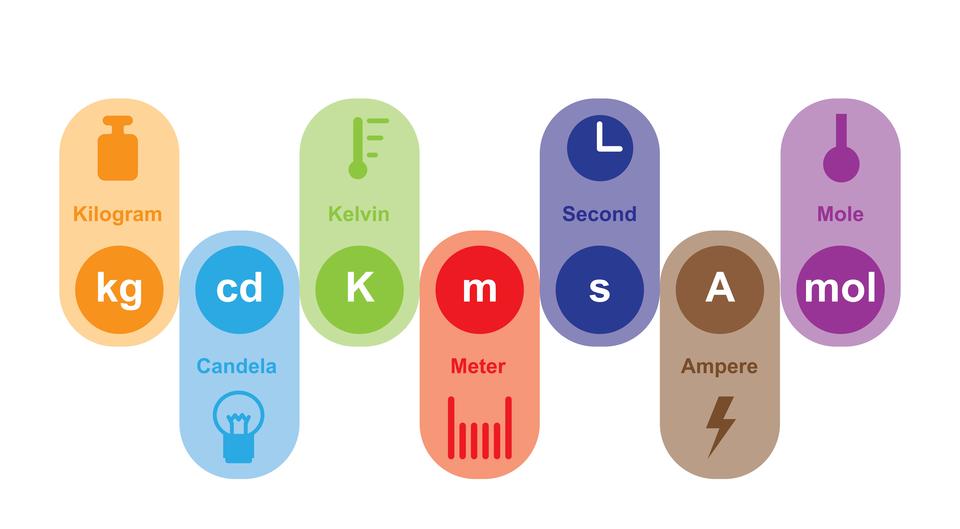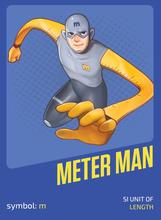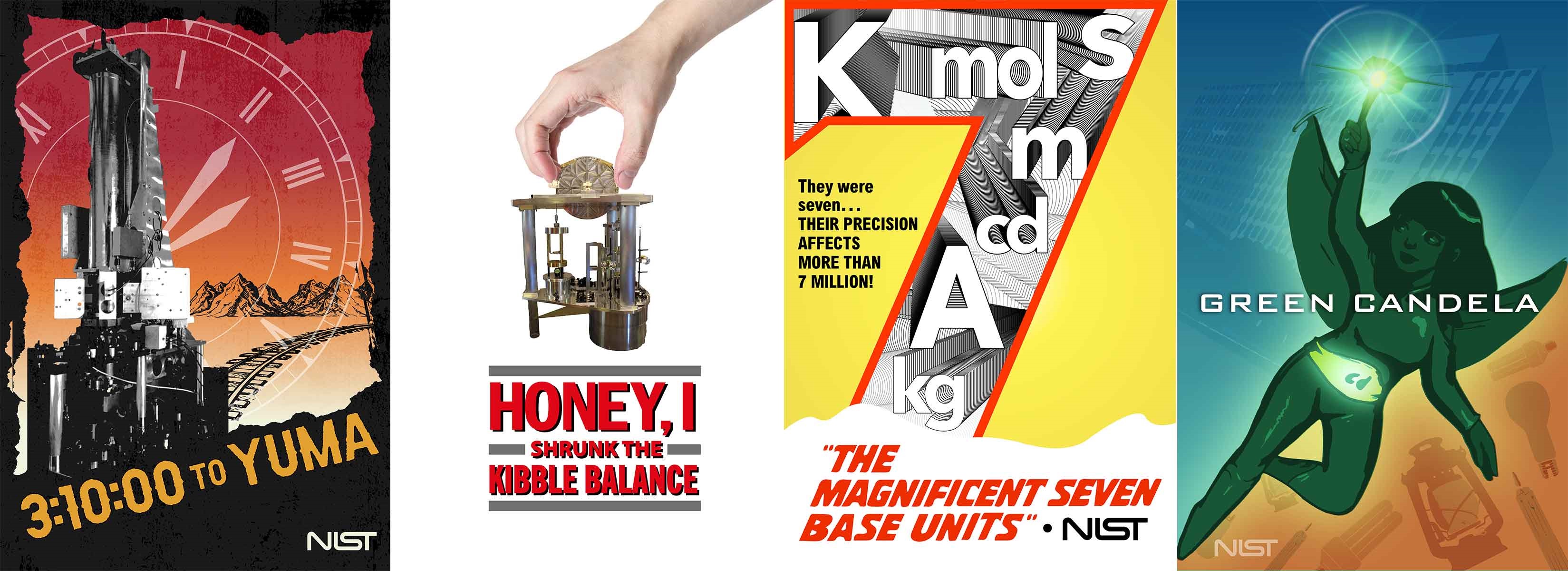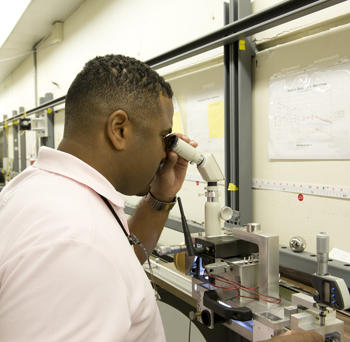Taking Measure
Just a Standard Blog

Calling all teachers, parents and students. It’s easy to learn the metric system — or, as it’s more formally called, the International System of Units (SI). Explore these top 10 tips for teaching the SI. Let’s begin the countdown with …
10. Make it fun!

Integrating metric measurements into play activities is an easy way to motivate students to learn more, build self-confidence and transfer metric measurement skills to other situations. Games provide a low-risk opportunity to experience success applying metric measurements.
- Play a round of the NIST Metric Trivia Quiz online or use the Alexa skill to test your knowledge and be on your way to thinking metric!
- Break up lectures with NIST’s comic-book-style animated videos featuring the Measurement League: Guardians of the SI. The superhero team uses its SI measurement superpowers to fight against uncertainty, imprecision and inaccuracy. In each video, students learn how measurements improve the quality of our lives and the things we build. The latest episode, "Two Truths and a Lie," provides opportunities for interactive learning in the classroom, and we also have student worksheets to go along with it.
- Decorate your classroom with NISTified movie posters and SI Measurement System charts.
- Build a DIY Lego Kibble balance and experience the concepts behind redefining the world's basic unit of mass, the kilogram. (For more about the creation of the Lego Kibble balance, check out this blog post.)

9. Teach non-SI unit conversions only when required.
Teach the metric system without making any comparisons to non-SI measurements.
After students become proficient using the metric system and are comfortable applying SI measurements, they may encounter applications that require making mathematical conversions between SI and non-SI units.
8. Connect to life and careers.
Make the SI relevant. Let’s face it, measuring stuff is a practical life skill. Build an awareness of the multitude of measurements we need and use every day. Our ability to interpret measurement scales, magnitude and approximate quantities is essential. Without a doubt, SI knowledge, skills and abilities are critical for measurement science and science, technology, engineering and mathematics (STEM) career success.
- Initially, focus on the basics: length, area, volume, mass, temperature and time.
- Use the decimal nature of the U.S. monetary system to model metric prefixes and place value.
Did you know that U.S. coins are designed to meet U.S. Mint metric coin design specifications? Each 5-cent U.S. nickel weighs 5 grams, and five rolls weigh about 1 kilogram.

- Use metric in sports to reinforce how measurements are used to ensure fairness in athletic competition. Officials, athletes and spectators depend on accurate event times, exact pressure readings for sports balls, and precise competition distances (think track and field events, like the 800 meter or 110 meter hurdle races) to establish new performance records. Sports provide an outstanding opportunity to observe metric measurements in action.
- Build measurement-related life skills, such as cooking with the metric system. Determine portion size and recipe yield, adjust recipes for different numbers of diners, evaluate ingredient quantities, evaluate baking temperatures and measure ingredients on a kitchen scale.
- View and discuss this animated video during class to learn how NIST’s mission impacts daily life.
7. Teach SI year-round.
Learning the SI should not be a one-time event. Students will encounter the SI as they progress through middle- and high-school science classes, so help prepare them by using the SI early in the formal education journey and year-round in your class.
Use hands-on measurement activities on a regular basis to build competence. Prioritizing metric measurements in your classroom increases student opportunities to practice and build skills.
Celebrating STEM-themed holidays is another way to highlight SI measurement applications. National Metric Week (in October) is all about metric measurements. Also near and dear to my measurement scientist heart are Weights and Measures Week (March 1-7, which commemorates President John Adams signing the first U.S. weights and measures legislation into law in 1799), World Metrology Day (May 20, which honors the signing of the Meter Convention in 1875), Mole Day (Oct. 23) and Mathematics and Statistics Awareness Month (April, #PowersofTen), to name a few.
6. Use an interdisciplinary approach.
Take a multidisciplinary approach when teaching the SI. SI measurements should not be isolated within the math and science curriculum. Addressing the topic of measurement across multiple disciplines emulates real-world applications and provides students with additional opportunities to learn in context and understand the impact measurements have on society.
Bring the SI into classrooms at every opportunity, including during instruction in language arts, fine arts, social sciences, industrial arts, vocational technologies, consumer studies and physical fitness. For example, origami combines art, geometry and engineering while applying metric length, area and volume measurements. With a supply of 15 cm by 15 cm origami paper, build and combine modular sonobe units to construct larger shapes and structures.

5. Build estimation skills.
Estimation is more than taking a guess! It’s a skill we use when it’s not important to find an exact measurement. The ability to interpret measurement scales and approximate a quantity helps us interpret the world around us. (Estimation skills are also valuable when developing a scientific hypothesis and evaluating if experimental data results are reasonable.)
- Begin by making comparisons to evaluate relative size or quantity. For young learners, placing objects in a serial order helps interpret the magnitude of small and large numbers. Help students grow their estimation abilities through experiences that focus on estimating and then verifying those estimates.
- Construct a 1 liter cube and use it to estimate the length, area and volume of common household items.
- NIST’s Metric Estimation Game is a fun hands-on activity that helps middle school students become familiar with SI measurements by practicing their skills of approximating quantities such as the volume of water in a bottle or mass of a nickel. Game participants collaborate in small groups, where peers can learn quickly from each other. Teachers are invited to register and participate in this free professional development webinar.
4. Develop reference points.

How much? How far? How hot or cold? It’s important for students to gradually develop an intuitive feeling for the magnitude of commonly used metric units.
- Begin by developing quantity benchmarks for 1 kilogram, 1 liter (cubic decimeter) and 1 meter. Conceptualizing the size of the unit and visualizing relative quantities facilitates sensemaking and spatial reasoning.
- Become familiar with everyday SI measurements. Experience with a variety of magnitudes will help students when checking for reasonableness.
- Recite the metric temperature poem (above). Measure and graph the outside temperature in terms of degrees Celsius daily.
3. Practice building proficiency and confidence making measurements.
Measurement involves doing. Learning must be timed with an opportunity to immediately practice and reinforce a new measurement skill. Even more importantly, students benefit from the opportunity to make mistakes, then gain feedback, learn and grow from them.
Use a variety of classroom activities that allow students to make measurements independently and within teams. Practice increases the opportunity to work through challenges with multiple attempts and to adjust and overcome difficulties.
2. Make measurements with metric tools.
Measurement concepts are meaningfully established through hands-on activities. Application, not memorization, is the key to success! The SI is easy to learn when taught using metric tools.
Build your metric classroom “toolbox” with a variety of instruments. Early measurement experiences often focus on linear measurements. Provide students with access to a variety of length measuring instruments, such as a selection of rigid rulers, flexible sewing or tailor-style tape measures, and cased/retractable tape measures. Be creative! Many teachers develop their own simple “manipulatives,” or teaching tools, like unmarked dowel rods of various lengths or pool noodle meter sticks.

A natural extension of length is area and volume, where metric graph paper (cm2) and cubic centimeter blocks (cm3) are invaluable. Base-10 model sets (flats, rods, cubes), decimeter (dm3) or liter (L) cubes, and cubic meter (m3) models are hands-on manipulatives designed to develop benchmarks. Over time, expand equipment to include vernier calipers, micrometers, quadrat frames (m2) and trundle wheels to replicate those used in STEM careers.
When provided experience with a variety of instruments and methods, students can improve their understanding of the measurement process. It’s important to recognize that all measurement instruments are imperfect and have an uncertainty associated with their use.
- Teach basic skills, like how to read a meniscus, use a metric ruler or read a Celsius thermometer. It’s important to recognize that even a minor measurement error can impact the success of a project or activity.
- Discover NIST education resources to expand SI classroom activities! Visit the Education site, a hub for all things education across the agency. The NIST Educational STEM Resource Registry (NEST-R) is an online tool that allows educators, students, parents and others to easily discover a variety of educational resources published by NIST staff.
- Our free NIST SI Teacher Kit contains a curated collection of instructional measurement resources. Email TheSI [at] nist.gov (TheSI[at]nist[dot]gov) and include your name, school, subject, grade level, phone number and U.S. mailing address to get your copy.
Be mindful when using dual-unit measuring equipment. For example, when learners use dual-scale rulers during an activity, they may inadvertently select and use the non-SI scale, accidently reporting their measurement result in inches instead of millimeters. An inexpensive solution that minimizes this risk is to use painters’ tape to cover the non-SI scale.
Infamous measurement mishaps can be used to illustrate the costly consequences of unit mix-ups.
1. Teach the SI as a system.
The SI is a complete measurement system made up of seven base units, deliberately designed to serve all measurement needs across specialized professions. Laypeople frequently only need to use a subset of measurement units for everyday applications.
- Get things rolling by teaching the commonly used SI prefixes, such as milli, centi, deci and kilo. Introduce additional prefixes in context through application when they’re needed. Over time, students should become familiar with all 20 SI prefixes.
- Writing measurements in a consistent format helps prevent miscommunication. Composing technical information in terms of the SI avoids the variations of language — including spelling and pronunciation.
What challenges have you faced teaching metric system measurements? What are your “go to” SI classroom measurement techniques? Let us know which of these metric system training techniques worked for you in the comments below or by contacting TheSI [at] nist.gov (TheSI[at]nist[dot]gov).
About the author
Related Posts
Comments
Mr. Kazdan is correct. However, it is more complicated than that, and, as usual, the "traditional" system is wrong. There are 2 ways to think about pounds: as a unit of force or as a unit of mass. For most people who live on a planet on which the acceleration due to gravity is 32 feet/second2 I'm sorry 9.8 m/sec2, the two definitions are equivalent. If I get on a bathroom scale, then my "weight" (which is the force I am exerting on the scale) is 165 lbs. So we could say my mass is also 165 lbs. Except that's not strictly true: my mass is 5.13 slugs. On the other hand, if we were to stipulate that my mass is 165 lbs, then the force I am exerting on the scale is 5310 poundals.
One way to think about this, which works well when explaining this to children, is that if I am on the International Space Station with a bathroom scale, and I step on the bathroom scale, I will go flying across the room. On the ISS, I am weightless, because the ISS is falling through space in a vacuum. But I still have a mass of 165 lbs and when that mass hits the wall on the other side of the room, boom!
To convert from pounds-force to poundals, multiply by 32.17 To convert from pounds-mass to slugs, divide by 32.17.
Centimetres are appropriate for gradeschool teaching, as children can easily associate a centimetre with width of a finger. However in higher school, teachers of trades and sciences should expunge the word "centimetre" from their speech, so that all calculations taught are made with prefixes in powers of 1000. Convert to millimetres before the calculation or you will have almost guaranteed an error of a factor of 10. An error of 1000 is more easily picked up and corrected.
BTW, the words ampere, kelvin, coulomb, etc should never be capitalised, even though their symbols A,K,C always are because they are named after real people. The other units, kilogram, metre, second, candela should never be capitalised, not even their symbols. Accordingly the graphic at the head of this article needs to be corrected, lest it mislead readers into incorrect usage.
Frequently the teacher or the textbook is still contaminated with the CGS system, inadequately converted to SI. It would help if the teacher converted all his/her own constants by rote before speaking to his/her students. After all, the teacher's speech becomes the students' thinking.
An upper gradeschool science class could start with a repeated chant, "kilo, mega, giga" then "milli, micro, nano". With this chant echoing as a reference, students subsequently know immediately in which ballpark a quoted quantity belongs.
An upper school STEM class would also benefit with an extended chant, "kilo, mega, giga, tera, peta, exa" and then, "milli, micro, nano, pico, femto, atto". Notice that these are geometric series in powers of 1000, and the CGS units, centi, deci, deka etc must not contaminate the chant.
I speak from experience of years of correcting freshmen, to relearn thinking in SI.
Well done, and a timely story. This topic should be revisited in a recurring manner. I might suggest outreach to industry STEAM/STEM/STEMM leaders to perhaps help create a more holistic story of why SI is important.
I quit learning the metric system years ago. Can't wrap my head around it, people have tried to teach me and I'm still confused. Someone will have to do a one on one and dumb it down to where a two year old can understand it. Then go at a mind dumbly sloooow for me to start to understand. Then maybe by the time I'm 80 I could possibly understand it.
I'm never going to understand metric, it's to hard for me to understand.
informative






Make sure students understand that there isn't an actual conversion between pounds and kilograms. Pounds measure force, and their SI analog is newtons; kilograms measure mass and have a customary English analog of slugs. Force and mass are independent measures!
I cringe at the science illiteracy we teach by repeating that their are 2.2 pounds per kilogram.